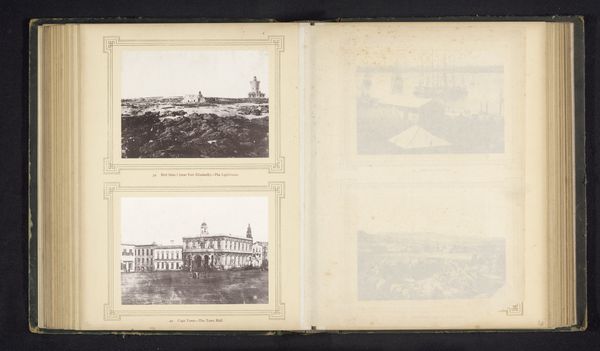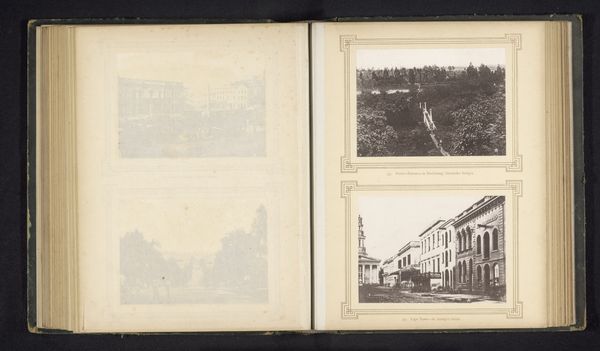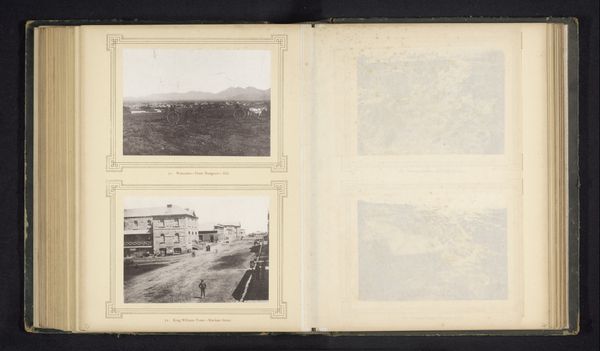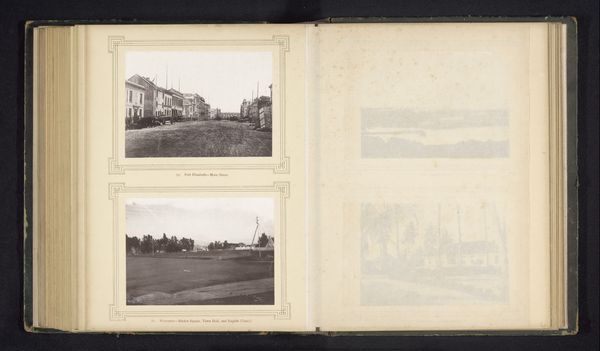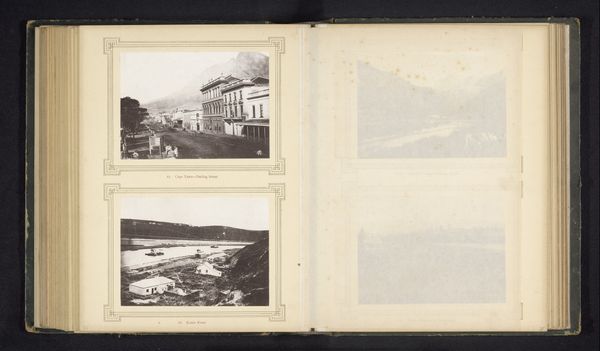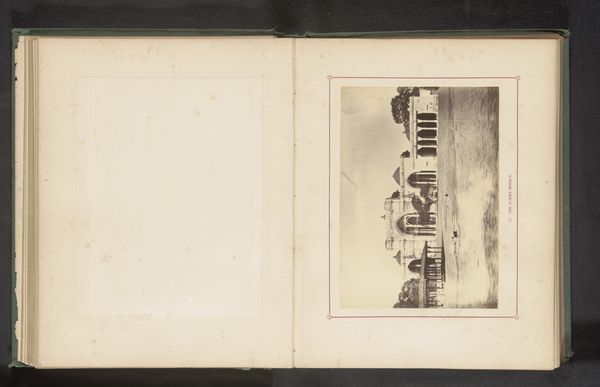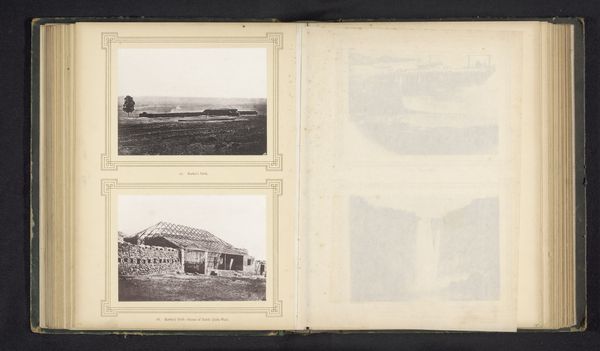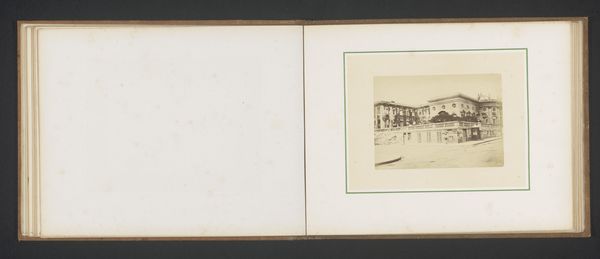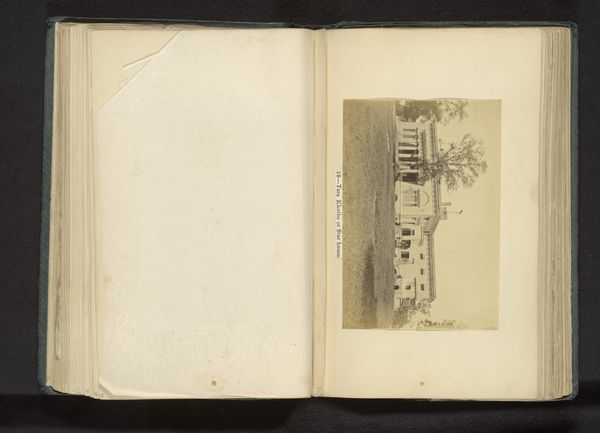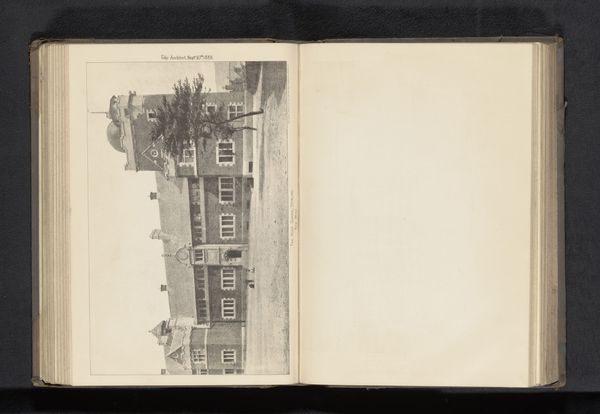![['Port Elizabeth-From "the hill"', 'Cape town-Government house'] by Sam Alexander](/_next/image?url=https%3A%2F%2Fd2w8kbdekdi1gv.cloudfront.net%2FeyJidWNrZXQiOiAiYXJ0ZXJhLWltYWdlcy1idWNrZXQiLCAia2V5IjogImFydHdvcmtzL2ZmZDNhYTIzLWFlMDktNGYzYy1hOWFmLTAxYTNkZGJlODQzNS9mZmQzYWEyMy1hZTA5LTRmM2MtYTlhZi0wMWEzZGRiZTg0MzVfZnVsbC5qcGciLCAiZWRpdHMiOiB7InJlc2l6ZSI6IHsid2lkdGgiOiAxOTIwLCAiaGVpZ2h0IjogMTkyMCwgImZpdCI6ICJpbnNpZGUifX19&w=3840&q=75)
photography, albumen-print
#
landscape
#
photography
#
cityscape
#
albumen-print
#
building
Dimensions: height 290 mm, width 219 mm
Copyright: Rijks Museum: Open Domain
Curator: Here we have a page from an album, showcasing two albumen prints predating 1880. The photographs depict "Port Elizabeth - From 'the hill'" and "Cape Town - Government House." Editor: The muted tones create an atmosphere of quiet authority, but the very act of documentation feels… loaded. These images participate in a colonial project of mapping and claiming space, wouldn’t you agree? Curator: Certainly. Consider the architectural symbols. The church spire dominates the Port Elizabeth scene, suggesting spiritual and cultural imposition, while the Government House is all about secular power, represented in the architectural decisions of the day. Buildings embody a sense of order and progress and become stand-ins for identity. Editor: The composition is telling, too. Placing the camera on "the hill" gives the photographer a vantage point that emphasizes dominance over the landscape and implicitly, its inhabitants. What narrative is encoded when the colonial gaze determines the composition and the captured buildings signify who belongs and who does not? Curator: An apt observation. Early photography frequently served as a tool of record-keeping but its perceived objectivity also lent it the weight of truth, so you could say photography established its claim on something. Editor: Exactly! This wasn't about neutral observation. Photography validated imperial visions, contributing to systems of social hierarchy and often justifying land appropriation, while documenting cultural displacement and even obliteration. Curator: It raises interesting questions about how buildings and cityscapes signify a sense of continuity and historical meaning, as cultural ideals solidified into visual terms that echo for many generations. What do we remember and honor with such imagery, what do we choose to forget or overwrite? Editor: It underscores that even seemingly straightforward landscape shots are imbued with ideology. Understanding how power is visually constructed helps us decode the lingering legacy of these historical moments. These spaces in turn serve to frame bodies and their narratives to maintain control in both space and time. Curator: Precisely, reminding us of the potent narratives embedded in spaces. A compelling convergence of documentation and symbolic meaning that invites continued thought. Editor: Agreed. We should remember and respect the places and persons we tend to ignore through art, documentation, and historiography.
Comments
No comments
Be the first to comment and join the conversation on the ultimate creative platform.
